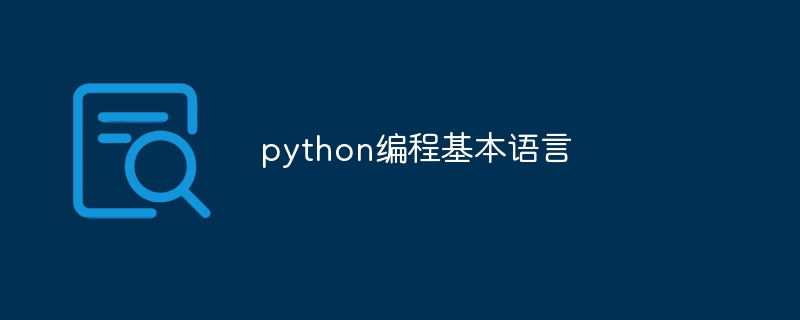
The Python programming language is known for its simple and easy-to-understand syntax, which is suitable for beginners. Its basic data types include numbers, strings, Boolean values, lists, tuples, and dictionaries. Variables are used to store data, which is done through assignment operations. Flow control is achieved through indentation, and common statements include if-else, for loops, and while loops. Functions are reusable blocks of code that accept input and produce output. Python provides input and output functions such as input() and print().

Basic syntax of Python programming
Python is a high-level programming language with concise and easy-to-understand syntax, which is very suitable for beginner.
Basic data types
Python provides a variety of basic data types, including:
Variables and Assignment
Variables are used in Python to store data. Use the equal sign (=) for assignment, such as:
<code class="python">x = 10 y = "Hello, world!"</code>
Flow control
Python uses indentation to control code blocks. Common flow control statements include:
Functions
Functions are reusable blocks of code that accept input parameters and produce output. Use the def keyword to define functions, such as:
<code class="python">def greet(name):
print("Hello, {}!".format(name))</code>Input and output
Python provides a variety of functions for input and output, such as :
input(): Get input from the user. print(): Print output on the console. Sample Program
Here is a simple Python program that demonstrates the previously mentioned concepts:
<code class="python"># 导入 sys 模块以获取命令行参数 import sys # 从命令行获取用户名 name = sys.argv[1] # 调用 greet 函数并传入用户名 greet(name)</code>
Conclusion
Python's syntax is simple and easy to understand, and its basic data types, flow control, functions, input and output and other concepts make it easy for beginners to enter the world of programming.
The above is the detailed content of python programming basic language. For more information, please follow other related articles on the PHP Chinese website!




